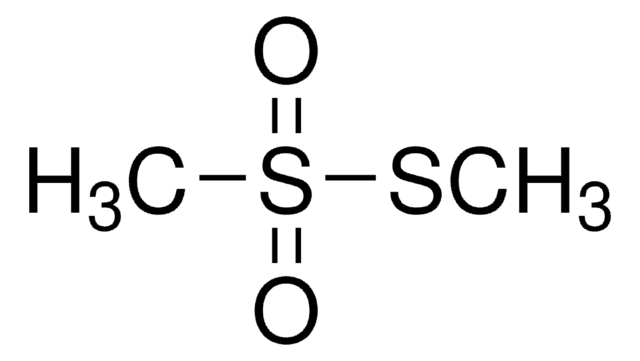おすすめの製品
グレード
ACS reagent
puriss. p.a.
品質水準
アッセイ
≥99.0% (KT)
フォーム
powder
不純物
≤0.0005% total nitrogen (N)
微量陰イオン
chloride (Cl-): ≤10 mg/kg
sulfate (SO42-): ≤50 mg/kg
微量陽イオン
As: ≤1 mg/kg
Ca: ≤10 mg/kg
Cd: ≤5 mg/kg
Co: ≤5 mg/kg
Cr: ≤5 mg/kg
Cu: ≤5 mg/kg
Fe: ≤5 mg/kg
K: ≤50 mg/kg
Mg: ≤5 mg/kg
Mn: ≤5 mg/kg
Na: ≤10 mg/kg
Ni: ≤5 mg/kg
Pb: ≤20 mg/kg
SMILES記法
O=[Zn]
InChI
1S/O.Zn
InChI Key
XLOMVQKBTHCTTD-UHFFFAOYSA-N
類似した製品をお探しですか? 訪問 製品比較ガイド
関連するカテゴリー
アプリケーション
シグナルワード
Warning
危険有害性情報
危険有害性の分類
Aquatic Acute 1 - Aquatic Chronic 1
保管分類コード
11 - Combustible Solids
WGK
WGK 2
引火点(°F)
Not applicable
引火点(℃)
Not applicable
適用法令
試験研究用途を考慮した関連法令を主に挙げております。化学物質以外については、一部の情報のみ提供しています。 製品を安全かつ合法的に使用することは、使用者の義務です。最新情報により修正される場合があります。WEBの反映には時間を要することがあるため、適宜SDSをご参照ください。
労働安全衛生法名称等を表示すべき危険物及び有害物
名称等を表示すべき危険物及び有害物
労働安全衛生法名称等を通知すべき危険物及び有害物
名称等を通知すべき危険物及び有害物
Jan Code
96479-500G:
96479-1KG:4548173960272
96479-VAR:
96479-BULK:
96479-250G:
96479-100G:4548173960289
この製品を見ている人はこちらもチェック
ライフサイエンス、有機合成、材料科学、クロマトグラフィー、分析など、あらゆる分野の研究に経験のあるメンバーがおります。.
製品に関するお問い合わせはこちら(テクニカルサービス)





